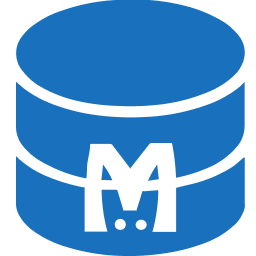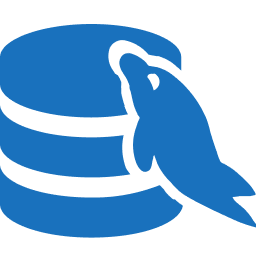New to KubeDB? Please start here.
KubeDB - FerretDB Replication
This tutorial will show you how to use KubeDB to run a FerretDB Replication.
Before You Begin
Before proceeding:
Read ferretdb replication concept to learn about FerretDB Replication clustering.
You need to have a Kubernetes cluster, and the kubectl command-line tool must be configured to communicate with your cluster. If you do not already have a cluster, you can create one by using kind.
Now, install KubeDB cli on your workstation and KubeDB operator in your cluster following the steps here.
To keep things isolated, this tutorial uses a separate namespace called
demothroughout this tutorial. Run the following command to prepare your cluster for this tutorial:$ kubectl create ns demo namespace/demo created
Note: The yaml files used in this tutorial are stored in docs/examples/ferretdb folder in GitHub repository kubedb/docs.
Deploy FerretDB Replication
To deploy a MongoDB Replication with both primary and secondary server, user have to specify spec.server option in FerretDB CRD.
The following is an example of a FerretDB object which creates FerretDB with two primary server and two secondary server.
apiVersion: kubedb.com/v1alpha2
kind: FerretDB
metadata:
name: ferret
namespace: demo
spec:
version: "2.0.0"
storage:
accessModes:
- ReadWriteOnce
resources:
requests:
storage: 1Gi
deletionPolicy: WipeOut
server:
primary:
replicas: 2
secondary:
replicas: 2
$ kubectl create -f https://github.com/kubedb/docs/raw/v2025.3.24/docs/examples/ferretdb/clustering/fr-replication.yaml
ferretdb.kubedb.com/ferret created
Here,
spec.serverrepresents the configuration for primary and secondary server.spec.server.primary.replicasdenotes the number of members in primary server.spec.server.secondary.replicasdenotes the number of members in sercondary server.spec.storagespecifies the StorageClass of PVC dynamically allocated to store data for this database. This storage spec will be passed to the PetSet created by KubeDB operator to run database pods. So, each members will have a pod of this storage configuration. You can specify any StorageClass available in your cluster with appropriate resource requests.
KubeDB operator watches for FerretDB objects using Kubernetes api. When a FerretDB object is created, KubeDB operator will create a new Postgres for the backend of this FerretDB object. Then it will create PetSet and a Service with the matching FerretDB object name. This service will always point to the primary of the replication servers. Another secondary service will be created as well for secondary server. KubeDB operator will also create two governing service for PetSets with the name <ferretdb-name>-pods and <ferretdb-name>-secondary-pods for primary and secondary servers.
$ kubectl describe fr -n demo ferret
Name: ferret
Namespace: demo
Labels: <none>
Annotations: <none>
API Version: kubedb.com/v1alpha2
Kind: FerretDB
Metadata:
Creation Timestamp: 2025-04-10T08:52:39Z
Finalizers:
kubedb.com
Generation: 3
Resource Version: 430129
UID: 4f47b22a-1cc8-4fec-b75d-fc94fcdfdc6c
Spec:
Auth Secret:
Name: ferret-auth
Deletion Policy: WipeOut
Health Checker:
Failure Threshold: 1
Period Seconds: 10
Timeout Seconds: 10
Server:
Primary:
Pod Template:
Controller:
Metadata:
Spec:
Containers:
Name: ferretdb
Resources:
Limits:
Memory: 1Gi
Requests:
Cpu: 500m
Memory: 1Gi
Security Context:
Allow Privilege Escalation: false
Capabilities:
Drop:
ALL
Run As Group: 1000
Run As Non Root: true
Run As User: 1000
Seccomp Profile:
Type: RuntimeDefault
Pod Placement Policy:
Name: default
Security Context:
Fs Group: 1000
Replicas: 2
Secondary:
Pod Template:
Controller:
Metadata:
Spec:
Containers:
Name: ferretdb
Resources:
Limits:
Memory: 1Gi
Requests:
Cpu: 500m
Memory: 1Gi
Security Context:
Allow Privilege Escalation: false
Capabilities:
Drop:
ALL
Run As Group: 1000
Run As Non Root: true
Run As User: 1000
Seccomp Profile:
Type: RuntimeDefault
Pod Placement Policy:
Name: default
Security Context:
Fs Group: 1000
Replicas: 2
Ssl Mode: disabled
Storage:
Access Modes:
ReadWriteOnce
Resources:
Requests:
Storage: 1Gi
Storage Type: Durable
Version: 2.0.0
Status:
Conditions:
Last Transition Time: 2025-04-10T08:52:39Z
Message: The KubeDB operator has started the provisioning of FerretDB: demo/ferret
Observed Generation: 2
Reason: DatabaseProvisioningStartedSuccessfully
Status: True
Type: ProvisioningStarted
Last Transition Time: 2025-04-10T08:54:20Z
Message: All replicas are ready for FerretDB demo/ferret
Observed Generation: 3
Reason: AllReplicasReady
Status: True
Type: ReplicaReady
Last Transition Time: 2025-04-10T08:54:31Z
Message: The FerretDB: demo/ferret is accepting client requests.
Observed Generation: 3
Reason: DatabaseAcceptingConnectionRequest
Status: True
Type: AcceptingConnection
Last Transition Time: 2025-04-10T08:54:31Z
Message: The FerretDB: demo/ferret is ready.
Observed Generation: 3
Reason: ReadinessCheckSucceeded
Status: True
Type: Ready
Last Transition Time: 2025-04-10T08:54:31Z
Message: The FerretDB: demo/ferret is successfully provisioned.
Observed Generation: 3
Reason: DatabaseSuccessfullyProvisioned
Status: True
Type: Provisioned
Phase: Ready
Events: <none>
Lets see what also created with this FerretDB,
$ kubectl get fr -n demo
NAME NAMESPACE VERSION STATUS AGE
ferret demo 2.0.0 Ready 45m
$ kubectl get pg -n demo
NAME VERSION STATUS AGE
ferret-pg-backend 17.4-documentdb Ready 45m
$ kubectl get petset -n demo
NAME AGE
ferret 43m
ferret-pg-backend 44m
ferret-secondary 43m
$ kubectl get svc -n demo
NAME TYPE CLUSTER-IP EXTERNAL-IP PORT(S) AGE
ferret ClusterIP 10.43.199.240 <none> 27017/TCP 46m
ferret-pg-backend ClusterIP 10.43.51.247 <none> 5432/TCP,2379/TCP 46m
ferret-pg-backend-pods ClusterIP None <none> 5432/TCP,2380/TCP,2379/TCP 46m
ferret-pg-backend-standby ClusterIP 10.43.121.236 <none> 5432/TCP 46m
ferret-pods ClusterIP None <none> 27017/TCP 46m
ferret-secondary ClusterIP 10.43.15.156 <none> 27017/TCP 46m
ferret-secondary-pods ClusterIP None <none> 27017/TCP 46m
$ kubectl get pvc -n demo
NAME STATUS VOLUME CAPACITY ACCESS MODES STORAGECLASS VOLUMEATTRIBUTESCLASS AGE
data-ferret-pg-backend-0 Bound pvc-e26fdc37-a7e4-4567-bc2e-d2e5e4e52ad9 1Gi RWO longhorn <unset> 46m
data-ferret-pg-backend-1 Bound pvc-470d3d5a-b00e-4100-bb8e-8bad63369f7b 1Gi RWO longhorn <unset> 45m
data-ferret-pg-backend-2 Bound pvc-5a02705b-b389-413d-98bb-969b5f0b9128 1Gi RWO longhorn <unset> 45m
$ kubectl get pv -n demo
NAME CAPACITY ACCESS MODES RECLAIM POLICY STATUS CLAIM STORAGECLASS VOLUMEATTRIBUTESCLASS REASON AGE
pvc-470d3d5a-b00e-4100-bb8e-8bad63369f7b 1Gi RWO Delete Bound demo/data-ferret-pg-backend-1 longhorn <unset> 46m
pvc-5a02705b-b389-413d-98bb-969b5f0b9128 1Gi RWO Delete Bound demo/data-ferret-pg-backend-2 longhorn <unset> 46m
pvc-e26fdc37-a7e4-4567-bc2e-d2e5e4e52ad9 1Gi RWO Delete Bound demo/data-ferret-pg-backend-0 longhorn <unset> 46m
$ kubectl get secret -n demo
NAME TYPE DATA AGE
ferret Opaque 1 48m
ferret-auth kubernetes.io/basic-auth 2 46m
ferret-backend-connection Opaque 2 46m
ferret-pg-backend-auth kubernetes.io/basic-auth 2 48m
ferretdb-ca kubernetes.io/tls 2 2d4h
KubeDB operator sets the status.phase to Ready once the database is successfully created. Run the following command to see the modified FerretDB object:
$ kubectl get mg -n demo mgo-replicaset -o yaml
apiVersion: kubedb.com/v1alpha2
kind: FerretDB
metadata:
annotations:
kubectl.kubernetes.io/last-applied-configuration: |
{"apiVersion":"kubedb.com/v1alpha2","kind":"FerretDB","metadata":{"annotations":{},"name":"ferret","namespace":"demo"},"spec":{"deletionPolicy":"WipeOut","server":{"primary":{"replicas":2},"secondary":{"replicas":2}},"storage":{"accessModes":["ReadWriteOnce"],"resources":{"requests":{"storage":"1Gi"}}},"version":"2.0.0"}}
creationTimestamp: "2025-04-10T08:52:39Z"
finalizers:
- kubedb.com
generation: 3
name: ferret
namespace: demo
resourceVersion: "430129"
uid: 4f47b22a-1cc8-4fec-b75d-fc94fcdfdc6c
spec:
authSecret:
name: ferret-auth
deletionPolicy: WipeOut
healthChecker:
failureThreshold: 1
periodSeconds: 10
timeoutSeconds: 10
server:
primary:
podTemplate:
controller: {}
metadata: {}
spec:
containers:
- name: ferretdb
resources:
limits:
memory: 1Gi
requests:
cpu: 500m
memory: 1Gi
securityContext:
allowPrivilegeEscalation: false
capabilities:
drop:
- ALL
runAsGroup: 1000
runAsNonRoot: true
runAsUser: 1000
seccompProfile:
type: RuntimeDefault
podPlacementPolicy:
name: default
securityContext:
fsGroup: 1000
replicas: 2
secondary:
podTemplate:
controller: {}
metadata: {}
spec:
containers:
- name: ferretdb
resources:
limits:
memory: 1Gi
requests:
cpu: 500m
memory: 1Gi
securityContext:
allowPrivilegeEscalation: false
capabilities:
drop:
- ALL
runAsGroup: 1000
runAsNonRoot: true
runAsUser: 1000
seccompProfile:
type: RuntimeDefault
podPlacementPolicy:
name: default
securityContext:
fsGroup: 1000
replicas: 2
sslMode: disabled
storage:
accessModes:
- ReadWriteOnce
resources:
requests:
storage: 1Gi
storageType: Durable
version: 2.0.0
status:
conditions:
- lastTransitionTime: "2025-04-10T08:52:39Z"
message: 'The KubeDB operator has started the provisioning of FerretDB: demo/ferret'
observedGeneration: 2
reason: DatabaseProvisioningStartedSuccessfully
status: "True"
type: ProvisioningStarted
- lastTransitionTime: "2025-04-10T08:54:20Z"
message: All replicas are ready for FerretDB demo/ferret
observedGeneration: 3
reason: AllReplicasReady
status: "True"
type: ReplicaReady
- lastTransitionTime: "2025-04-10T08:54:31Z"
message: 'The FerretDB: demo/ferret is accepting client requests.'
observedGeneration: 3
reason: DatabaseAcceptingConnectionRequest
status: "True"
type: AcceptingConnection
- lastTransitionTime: "2025-04-10T08:54:31Z"
message: 'The FerretDB: demo/ferret is ready.'
observedGeneration: 3
reason: ReadinessCheckSucceeded
status: "True"
type: Ready
- lastTransitionTime: "2025-04-10T08:54:31Z"
message: 'The FerretDB: demo/ferret is successfully provisioned.'
observedGeneration: 3
reason: DatabaseSuccessfullyProvisioned
status: "True"
type: Provisioned
phase: Ready
Please note that KubeDB operator has created a new Secret called ferret-auth (format: {ferretdb-object-name}-auth) for storing the password for postgres superuser managed by postgres as FerretDB don’t manage authentication itself. This secret contains a username key which contains the username for FerretDB superuser and a password key which contains the password for FerretDB superuser.
If you want to use custom or existing secret please specify that when creating the FerretDB object using spec.authSecret.name. While creating this secret manually, make sure the secret contains these two keys containing data username and password. For more details, please see here.
Redundancy and Data Availability
Now, you can connect to this database through mongo-shell locally). In this tutorial, we will insert document on the primary server, and we will see if the data becomes available on secondary server.
At first, insert data inside primary server.
$ kubectl get secrets -n demo ferret-auth -o jsonpath='{.data.\username}' | base64 -d
postgres
$ kubectl get secrets -n demo ferret-auth -o jsonpath='{.data.\password}' | base64 -d
7.KCC5Z97cUlOdyt
$ kubectl port-forward svc/ferret -n demo 27017
Forwarding from 127.0.0.1:27017 -> 27017
Forwarding from [::1]:27017 -> 27017
Handling connection for 27017
Handling connection for 27017
Now in another terminal
$ mongosh 'mongodb://postgres:UxV5a35kURSFE(;5@localhost:27017/ferretdb'
Current Mongosh Log ID: 67f793c162ee47b21d6b140a
Connecting to: mongodb://<credentials>@localhost:27017/ferretdb?directConnection=true&serverSelectionTimeoutMS=2000&appName=mongosh+2.4.2
Using MongoDB: 7.0.77
Using Mongosh: 2.4.2
For mongosh info see: https://www.mongodb.com/docs/mongodb-shell/
------
The server generated these startup warnings when booting
2025-04-10T09:47:49.075Z: Powered by FerretDB v2.0.0-1-g7fb2c9a8 and DocumentDB 0.102.0 (PostgreSQL 17.4).
2025-04-10T09:47:49.075Z: Please star 🌟 us on GitHub: https://github.com/FerretDB/FerretDB and https://github.com/microsoft/documentdb.
2025-04-10T09:47:49.075Z: The telemetry state is undecided. Read more about FerretDB telemetry and how to opt out at https://beacon.ferretdb.com.
------
ferretdb> show dbs
kubedb_system 0 B
ferretdb> use newdb
switched to db newdb
newdb> db.movie.insert({"name":"batman"});
{
acknowledged: true,
insertedIds: { '0': ObjectId('67f793ef62ee47b21d6b140b') }
}
newdb> db.movie.find().pretty()
[ { _id: ObjectId('67f793ef62ee47b21d6b140b'), name: 'batman' } ]
newdb> exit
Now, check the redundancy and data availability in secondary server.
KubeDB create ferret-secondary service to connect with the FerretDB secondary server. Basically this service is connected with standby service ferret-pg-backend-standby created for backend Postgres by KubeDB operator.
So we have to port-forward the secondary service.
$ kubectl port-forward svc/ferret-secondary -n demo 27018:27017
Forwarding from 127.0.0.1:27018 -> 27017
Forwarding from [::1]:27018 -> 27017
Now in another terminal
$ mongosh 'mongodb://postgres:UxV5a35kURSFE(;5@localhost:27018/ferretdb'
Current Mongosh Log ID: 67f793c162ee47b21d6b140a
Connecting to: mongodb://<credentials>@localhost:27017/ferretdb?directConnection=true&serverSelectionTimeoutMS=2000&appName=mongosh+2.4.2
Using MongoDB: 7.0.77
Using Mongosh: 2.4.2
For mongosh info see: https://www.mongodb.com/docs/mongodb-shell/
------
The server generated these startup warnings when booting
2025-04-10T09:47:49.075Z: Powered by FerretDB v2.0.0-1-g7fb2c9a8 and DocumentDB 0.102.0 (PostgreSQL 17.4).
2025-04-10T09:47:49.075Z: Please star 🌟 us on GitHub: https://github.com/FerretDB/FerretDB and https://github.com/microsoft/documentdb.
2025-04-10T09:47:49.075Z: The telemetry state is undecided. Read more about FerretDB telemetry and how to opt out at https://beacon.ferretdb.com.
------
ferretdb> show dbs
kubedb_system 0 B
ferretdb> use newdb
switched to db newdb
newdb> db.movie.find().pretty()
[ { _id: ObjectId('67f793ef62ee47b21d6b140b'), name: 'batman' } ]
newdb> exit
So we can see data inserted in primary server also exist is secondary server.
Automatic Failover
FerretDB’s backend Postgres is managed by KubeDB. FerretDB just connect with the KubeDB managed backend Postgres Primary and Standby service. So KubeDB managed FerretDB won’t have to take any responsibility in case any failover required in backend postgres. KubeDB will automatically manage the failover process of backend Postgres.
Cleaning up
To clean up the Kubernetes resources created by this tutorial, run:
kubectl delete fr -n demo ferret
kubectl delete ns demo
Next Steps
- Detail concepts of FerretDB object.
- Monitor your FerretDB database with KubeDB using out-of-the-box Prometheus operator.
- Monitor your FerretDB database with KubeDB using out-of-the-box builtin-Prometheus.
- Detail concepts of FerretDB object.
- Want to hack on KubeDB? Check our contribution guidelines.






























